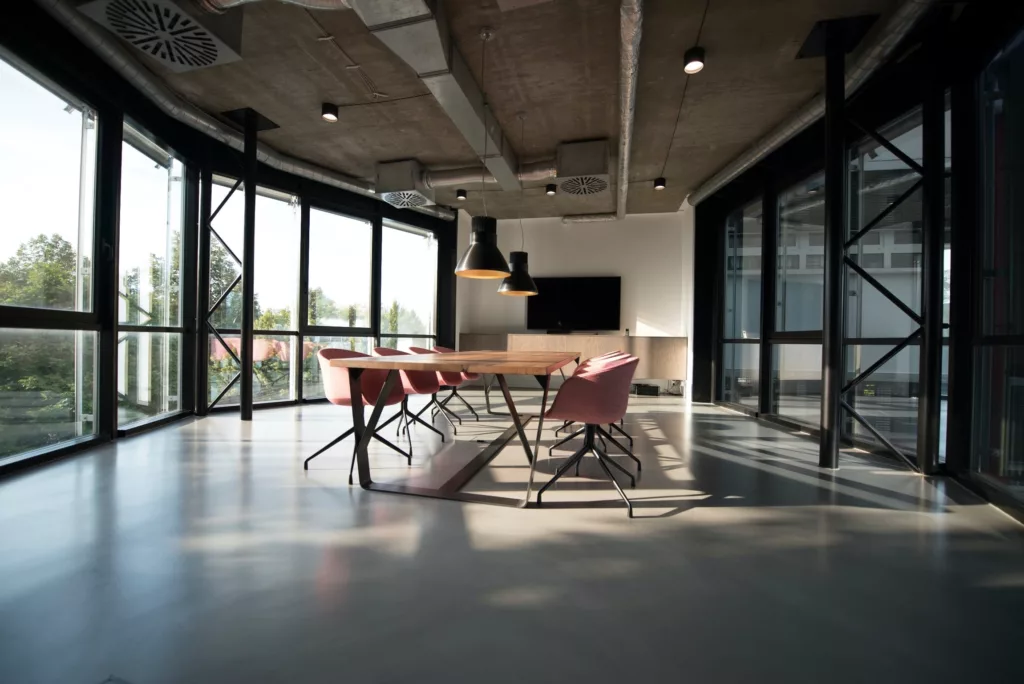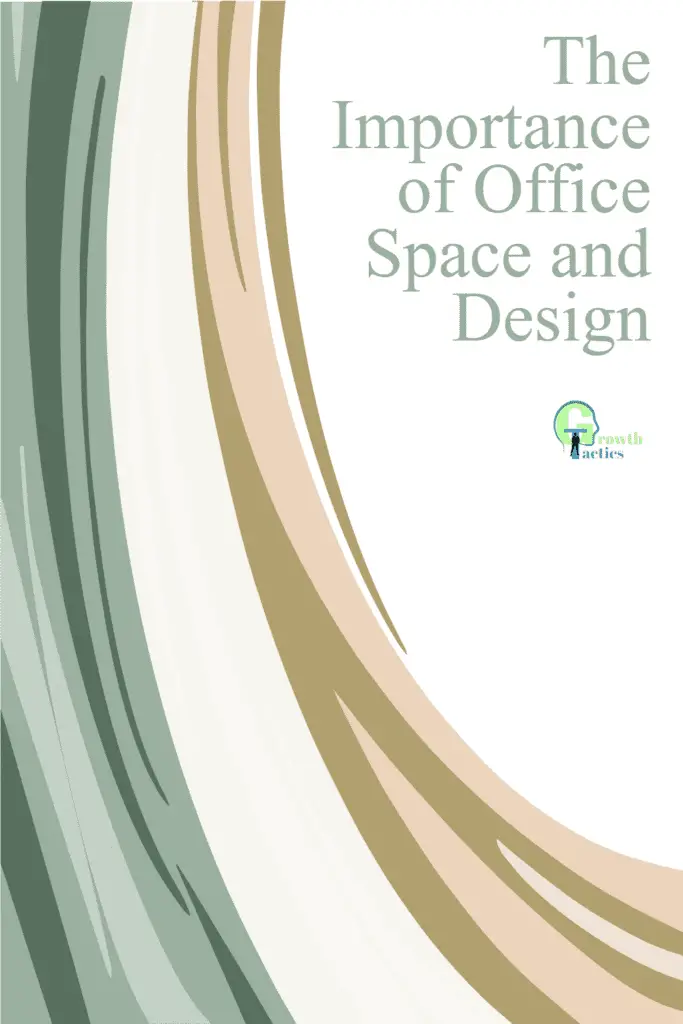Office space is a vital component of our work lives, impacting productivity, employee satisfaction, and company culture. Whether we are working in a traditional office or from home, the design and layout of our workspace play a significant role in our success. In this article, we will explore why office space matters and how finding the right work environment is essential for achieving our goals.
Jump To Section
The Effects of Office Design on Productivity

Overview of Research on Office Design and its Impact on Productivity
The design of an office space has gained significant attention in recent years due to its potential impact on employee productivity. Numerous studies have explored the relationship between office design and workplace performance, shedding light on the importance of creating a conducive work environment. This article examines the key findings from research and provides insights into how office design influences productivity.
Specific Examples of How Workplace Design Influences Employee Performance
Office design can have both direct and indirect effects on employee performance. For instance, the layout of the workspace can affect communication and collaboration among employees, influencing their ability to work as a team. Additionally, factors such as lighting, temperature, and air quality can impact the physical and mental well-being of employees, consequently affecting their productivity levels.
Research has also shown that the selection of furniture and equipment plays a crucial role in employee performance. Ergonomic chairs and adjustable desks promote comfort and prevent physical discomfort, enabling individuals to focus on their tasks for longer durations. Creating dedicated spaces for different activities, such as quiet zones for concentration or collaborative areas for group work, also contributes to improved productivity.
Suggestions for Designing an Office that Promotes Productivity
Based on current research, there are several recommendations for designing an office that optimizes productivity:
-
Incorporate natural elements: Introduce natural light, plants, and other biophilic elements into the workspace to create a calming and refreshing atmosphere.
-
Provide flexibility: Offer a variety of spaces and furniture arrangements that accommodate different work styles and tasks. This includes providing standing desks, flexible seating options, and adaptable meeting rooms.
-
Consider acoustics: Implement sound-absorbing materials, partitions, or designated quiet areas to minimize noise distractions and enable focused work.
-
Enhance comfort: Invest in ergonomic furniture and adjustable equipment that promote proper posture, reduce physical strain, and increase comfort during long hours of work.
-
Encourage collaboration: Design communal spaces and breakout areas that foster communication, interaction, and idea-sharing among employees.
-
Prioritize employee well-being: Consider factors such as air quality, temperature, and lighting to create a healthy and pleasant work environment that supports employee well-being.
By implementing these suggestions, organizations can promote a productive and engaging work environment that ultimately enhances employee performance and satisfaction.
The Connection Between Office Space, Employee Happiness, and Company Culture
The design of an office space significantly impacts employee happiness and job satisfaction. When employees have a pleasant and supportive work environment, they tend to be happier, more engaged, and more productive. On the other hand, a poorly designed workspace can lead to dissatisfaction, stress, and decreased motivation.
Examples of How Design Factors Contribute to a Positive Work Environment
Several design factors can contribute to a positive work environment and boost employee happiness:
-
Natural light: Introducing natural light into the office can enhance mood, reduce fatigue, and improve overall job satisfaction.
-
Comfortable and ergonomic furniture: Providing comfortable chairs, adjustable desks, and supportive equipment helps employees avoid physical discomfort and increases their satisfaction with their workspace.
-
Open and collaborative spaces: Creating areas that promote collaboration and interaction can foster a sense of camaraderie among employees and improve their overall happiness at work.
Tips for Creating a Workplace that Promotes Employee Wellbeing
To create a workplace that prioritizes employee well-being, consider the following tips:
-
Include quiet areas: Designate spaces for focused work and provide opportunities for employees to escape noise and distractions when needed.
-
Offer amenities: Consider adding amenities such as wellness rooms, relaxation areas, or onsite gyms to support employee well-being and encourage work-life balance.
-
Personalize workspaces: Allowing employees to personalize their workspace with photos, plants, or artwork can help create a sense of ownership and belonging, boosting their happiness.
-
Consider flexible work arrangements: Offering flexible work options, such as remote work or flexible hours, can improve work-life balance and contribute to overall employee happiness.
-
Encourage breaks: Designate spaces for employees to take short breaks and recharge, which can help improve focus and productivity.
By implementing these design factors and strategies, employers can create a workplace that promotes employee well-being, satisfaction, and overall happiness.
The Role of Office Space in Employee Recruitment and Retention
Office space is a critical factor in attracting and retaining top talent in today’s job market. With a growing workforce that values workplace culture and environment, companies must offer an office space that meets the needs and preferences of their employees. In a competitive job market, employees have high expectations of their workplace and will consider office design when deciding whether to stay or leave for another opportunity.
Discussion of How Companies Can Use Office Design to Differentiate Themselves
Companies can use their office design as a tool for branding, differentiation, and recruitment. By creating a unique and attractive workspace, companies can stand out in the job market and attract top candidates. Furthermore, companies can use their space to send a message about their values and culture, helping them to retain their current workforce.
To differentiate themselves, companies can consider the following design factors:
-
Incorporation of natural elements: Including plants, greenery, and natural light in an office design can create a calming and inviting atmosphere, which can have a positive impact on both current and potential employees.
-
Flexibility: Office spaces that offer flexible work areas and various workstations allow employees to choose their preferred work style and work environment, enhancing the overall productivity and satisfaction of employees.
-
Innovation: Offices that embrace new technology, forward-thinking design, and unique layouts showcase a company’s values and commitment to innovation, which is a characteristic that is appealing to new talent.
Examples of Companies That Have Used Workplace Design to Enhance Their Brand and Reputation
Several companies have used their office space to differentiate themselves and enhance their brand and reputation. For example, Google’s headquarters set the bar for design innovation, featuring a combination of creative and collaborative spaces, games, and comfortable work areas. Similarly, Airbnb’s San Francisco office space reflects its brand with unique meeting rooms named after famous listings, such as the “Van Gogh Bedroom” and the “Holodeck”.
By using office design to positively differentiate themselves, companies can attract and retain top talent while enhancing their brand and reputation.
Considerations for Office Space Design
Designing an office space requires careful consideration of several factors. A well-planned and designed office can improve productivity, create a positive environment, and promote collaboration among employees. Here are some essential factors to consider when designing an office space.
Overview of Important Factors to Consider when Designing an Office Space
1. Space Planning – Efficient space planning and zoning can optimize the use of available space, reducing clutter, and creating a tidy work environment.
2. Lighting – Proper lighting can improve work environment and boost productivity. Natural light or the use of ambient lighting can help reduce eye strain and create a more comfortable working environment.
3. Furniture – Choosing comfortable and ergonomic furniture can help reduce physical discomfort and promote good posture, which in turn increases productivity.
4. Acoustics – Installing acoustic panels in meeting rooms and private offices can help block out noise and create a more focused environment.
5. Color and Design – Choosing the right color palette and design can improve the overall ambiance and mood of the workspace. Colors such as blue, green, and yellow promote calmness, focus, and positivity.
Discussion of Key Design Trends and Best Practices
Some current office design trends and best practices include:
-
Open-Plan Workspaces: Collaborative and open workspaces promote communication, teamwork, and inclusivity.
-
Biophilic Design: Incorporating natural elements such as plants, water features, and natural colors can improve mood and promote creativity.
-
Multi-Purpose Spaces: Flexible and multi-purpose spaces can improve the utilization of office space, increase efficiency, and reduce costs.
-
Work-Life Integration: Office spaces that support work-life integration, such as wellness rooms and gym facilities, can promote employee well-being and satisfaction.
Tips for Creating an Office Space that Works for Your Specific Needs
1. Understand Your Company Needs – Before designing an office space, consider the unique needs of your company and employees.
2. Consider Your Budget – While designing your office space, it’s important to have a clear budget in mind to avoid overspending.
3. Collaborate with Professionals – Consider working with designers or consultants to help design an office space that meets your specific needs and budget.
4. Test Designs – Before investing in an office redesign or renovation, consider testing different designs or configurations to optimize the workspace layout.
5. Convey Your Brand – Use your office design to convey your brand and values, and create an environment that reflects them.
Conclusion
In conclusion, designing an office space requires careful consideration of several factors. By keeping these factors in mind, following best practices, and building your workspace around the specific needs of your company, you can create a successful and efficient environment conducive to increased employee productivity and satisfaction.


